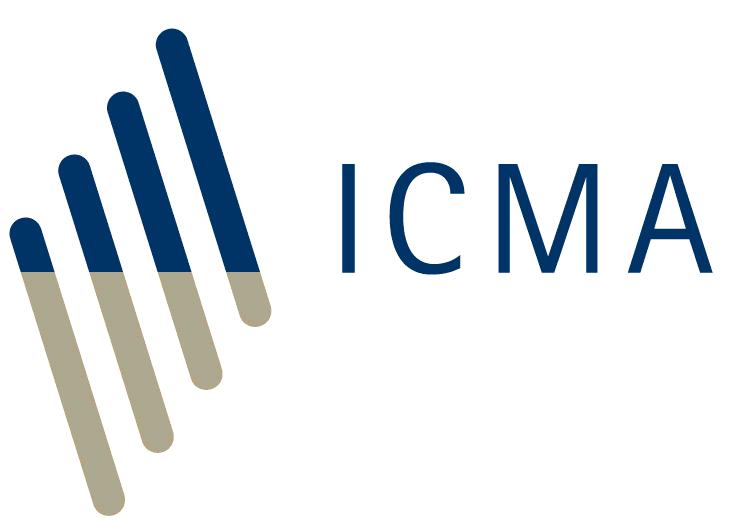Following the global financial crisis which erupted in 2007, various rates of return in Europe started to become negative. Since 2014, negative rates have become persistent and widespread. Initially, many cash investors have been reluctant to accept negative rates, including parties to repo transactions being remunerated on deposits of cash margin and on income due on securities they have given as collateral.
Before the crisis, repo was the only financial instrument which paid a rate of return that could become negative under normal market conditions. Negative repo rates can happen when a particular collateral security is subject to exceptional borrowing demand and/or reduced supply in the repo market. In order to borrow these securities, buyers have to tempt potential sellers with cheap cash. ‘Cheap’ means a repo rate less than the GC repo rate. When the repo rate on a particular collateral asset falls below the GC repo rate (see question 8), that asset is said to have gone ‘on special’ (see question 9).
In the case of very special collateral, the repo rate can fall so far that it becomes negative. This naturally happens more frequently when the GC repo rate is already close to zero, as there is less distance for a special repo rate to fall in order to become negative.
During periods of financial stress in Europe, GC repo rates in several currencies became negative. This meant that most, if not all, securities in a particular currency were subject to exceptional demand. Typically, these securities were the government bonds of strong economies and were strongly sought after because they were seen as ‘safe haven’ assets.
Since 2014, negative rates have also been driven by the exceptional lending extended by the ECB and other European central banks in order to try to head off deflation, as well as regulatory disincentives to wholesale deposit-taking by banks (who try to deter depositors by quoting negative interest rates).
What does a negative repo rate mean?
A negative repo rate means that the buyer (who is lending cash) effectively pays interest to the seller (who is borrowing cash). For example, consider a one-week repo with a purchase price of EUR 10 million at a repo rate of -0.50%. The repurchase price will be:
10,000,000 *(-0.50 x 7/100 x 360) = 9,999,027.78
The buyer (cash lender) pays the purchase price of 10,000,000 and receives the repurchase price of 9,999,027.78, therefore making a loss; whereas the seller (cash borrower) receives the purchase price of 10,000,000 and pays the repurchase price of 9,999,027.78, therefore making a gain.
Problems caused by negative rates for repo transactions
These problems fall into two categories:
- Difficulties arising from the fact that standard repo contracts --- such as the GMRA --- have been drafted under the implicit assumption that GC repo rates would only ever be positive. When GC repo rates are negative, problems arise:
- In the case of the early termination of a buy/sell-back following a default or in calculating the exposure on the transaction for the purpose of variation margining, where the payment of a coupon, dividend and other income on collateral is assumed to be reinvested at the repo rate on the transaction before being passed to the seller by means of a reduction in the repurchase price (in lieu of a manufactured payment).
- Where parties have agreed to use a repo rate as the interest rate to be paid on cash margin.
- Because a negative repo rate creates a perverse incentive to the seller to fail to deliver collateral on the purchase date.
- Initial disagreements between parties, due to the novelty of negative interest rates in general, over the interest rate to be paid on cash margin.
When income is paid on collateral in a repo, it is paid to the buyer, who is the legal owner. But the buyer is obliged to make an equivalent payment to the seller. In a repurchase transaction, the payment is due immediately and is often called a ‘manufactured payment’ (see question 22). But in a buy/sell-back, this payment is deferred until the repurchase date, when it is deducted from the repurchase price. In the interim, the buyer is obliged to reinvest the value of the payment in order to compensate the seller for the delay in reimbursement. If (1) such a buy/sell-back is terminated because of a default by one of the parties or (2) the exposure on the transaction is being calculated for the purpose of variation margining, a reinvestment rate has to be assumed. The reinvestment rate is given in the formula for the Sell Back Price (which is equivalent to the repurchase price) in the Buy/Sell-Back Annex of the GMRA (see paragraph 2(a)(iii)(y)):
(P + AI + D) − (IR + C)
where:
P Purchase Price – ie the clean price of collateral in the case of a buy/sell-back.
AI amount equal to Accrued Interest at the Purchase Date, paid under paragraph 3(f) of the Buy/Sell-Back Annex – which is coupon interest accrued on the collateral security since the last income payment date.
D Sell Back Differential (equivalent to repo interest).
IR amount of any coupon income in respect of the Purchased Securities payable by the issuer on or, in the case of registered Securities, by reference to, any date falling between the Purchase Date and the Repurchase Date – which is a coupon, dividend or other income paid during the term of the buy/sell-back.
C aggregate amount obtained by daily application of the Pricing Rate for such Buy/Sell Back Transaction to any such income from (and including) the date of payment by the issuer to (but excluding) the date of calculation – which is the reinvestment income on the income payment calculated at the repo rate on the buy/sell-back.
If the repo rate (C) is negative solely because the collateral is special, it is not appropriate to use it as a cash reinvestment rate. However, unless the parties agree to amend this formula, they will be obliged to follow it.
In practice, this problem may not be significant for parties who are active dealers in buy/sell-backs, given the likely alternation in the direction of underlying positions and payments of income, as well as the likely infrequency of income payments.
Where the interest rate to be paid on cash margins is a repo rate
Under paragraph 4(f) of the GMRA, parties holding cash margin are obliged to pay interest “at such rate, payable at such times, as may be specified in Annex I… or otherwise agreed between the parties…” Parties could have agreed to use the repo rate on the underlying transaction, particularly where that transaction is being margined in isolation. In the first case, if the agreed repo rate goes on special --- in other words, if it falls below the GC repo rate --- that rate is no longer representative of the going rate for cash reinvestment. The spread between a special repo rate and the GC repo rate represents a borrowing fee for the specific collateral asset. Using a special repo rate as a cash investment rate is therefore implicitly charging a fee that has nothing to do with the value of cash. Accordingly, the use of a special repo rate violates the principle that the use of a security as collateral in a repo should not cause the seller to gain or lose on his investment in that security as a consequence of having repoed it out. However, whatever the economic argument, a party cannot unilaterally change the cash reinvestment rate previously agreed with its counterparty. It must seek to negotiate a new interest rate with the counterparty.
The perverse incentive created by negative repo rates to sellers to fail to deliver on the purchase date
If a seller fails to deliver collateral on the purchase date of a repo, he will not receive or be able to retain the purchase price until he does deliver. However, the seller will remain obliged to pay repo interest to the buyer, even if he delivers the collateral late and therefore has delayed use of the cash. Having to pay interest without having the use of cash is a cost that provides an incentive to the seller to remedy a failure to deliver as well as providing compensation to the buyer.
However, if the repo rate on a particular transaction is negative (whether this is because the collateral is on special or because GC repo rates have gone negative), the automatic cost of failing to deliver collateral becomes a perverse incentive to fail. This is because the repo interest due to be paid is negative, which means it has to be paid by the buyer, despite the fail being caused by the seller. Thus, the seller will be rewarded for his failure!*
To eliminate the perverse incentive arising from negative repo rates, the ICMA issued a recommendation in November 2004 on behalf of the then European Repo Council (ERC) that, when the seller fails to deliver on the purchase date of a negative rate repo, the repo rate should automatically reset to zero until the failure is cured, while the buyer has the right to terminate the failed transaction at any time. Subsequently, this recommendation has been included as an optional supplementary condition in Annex I of the GMRA 2011. For parties using the GMRA 2000, it is best practice to adopt the ICMA recommendation by an agreed amendment to the GMRA or, if that is not practicable, by inclusion in confirmations.
Disagreements between parties due to the novelty of negative interest rates
The negative interest rates that appeared following the crisis that erupted in 2007 were historically unusual, episodic in appearance and not expected to persist. Many parties therefore felt that it was inappropriate to apply negative rates to cash margin paid under repo agreements and to the reinvestment of income payments on collateral in buy/sell-back.
However, as already explained, whatever the economic argument, a party cannot unilaterally change the cash reinvestment rate previously agreed with its counterparty. It must seek to negotiate a new interest rate with the counterparty.
Since 2014, it has become apparent that negative interest rates are likely to persist for some time in many currencies. They have become a ‘new normal’. It is now no longer possible to sustain an argument that negative interest rates are some sort of aberration.
What is the most appropriate cash investment rate for use in repo transactions?
The most appropriate rate for the reinvestment of cash margin and collateral income in buy/sell-backs is the GC repo rate for the currency. In the case of cash margin, this should be the overnight GC repo rate, given that margin can change daily. In the case of the reinvestment of collateral income in buy/sell-backs, the theoretical choice would be a GC rate for a tenor equal to the interval until the repurchase date (the reinvestment period). However, GC repo rates for some tenors may be difficult to agree, in which case, the next best choice would also be the overnight GC repo rate (depending on the perceived roll-over risk).
If it is not possible to agree on the fixing of an overnight GC repo rate, the most pragmatic alternative would be to use a recognized overnight unsecured interbank deposit rate benchmark. Under normal market conditions, there should not be much difference between overnight secured and unsecured rates. And in practice, such overnight indexes are already commonly used in the repo market as cash reinvestment rates.
*Even at zero or low positive repo rates, there is a perverse incentive on the Seller to fail, inasmuch as a failure to deliver creates a free option on the repo rate. If the repo rate rises subsequently, the Seller can cure the fail with collateral borrowed through a separate reverse repo. He will owe interest at the original repo rate on the cash he receives on repo on which he has just delivered but will receive interest at the new higher rate on the cash he gives on the reverse repo.
Back to Frequently Asked Questions on repo contents page
<<< Previous page Next page>>>







